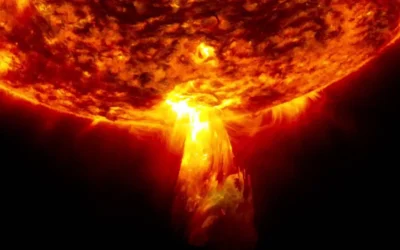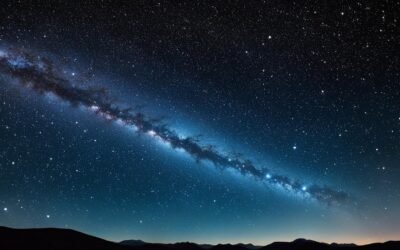If your quest is to traverse the awe-inspiring expanse of the night sky, then the Caldwell catalogue is your indispensable companion. This curated anthology of celestial wonders offers an enthralling alternative to the famed Messier catalogue, guiding you through an astronomical journey of discovery. Compiled with precision and passion, the catalogue showcases an exceptional selection of deep-sky delights that include twinkling star clusters, spiraling galaxies, and ethereal nebulae, each poised to captivate your gaze and enrich your stargazing adventures.
Whether you’re an experienced observer or a fledgling star-seeker, the Caldwell catalogue unlocks a universe brimming with over a hundred celestial objects. These stars, galaxies, and nebulae are scattered across both the northern and southern skies, presenting an inclusive roadmap for anyone eager to behold the universe’s grandeur. Marvel at the celestial ballet from the comfort of your backyard or a remote dark sky preserve; each Caldwell object awaits your discovery.
Remember, as you set your sights beyond our atmosphere, you’re not merely a spectator but a participant in the timeless act of exploration. With every glance through your telescope, another page of the cosmic story unfolds before you.
Key Takeaways
- The Caldwell catalogue complements the Messier collection with 109 celestial objects—including star clusters, galaxies, and nebulae—to observe.
- It extends the view of the skies beyond the Northern Hemisphere, offering a more global perspective for stargazers worldwide.
- Accessible to amateur astronomers, this guide enhances your exploration of the night sky and deepens your connection to the cosmos.
- Each object within the Caldwell catalogue invites you on a journey, offering countless opportunities for awe and discovery.
- The detailed selection within the catalogue reflects Sir Patrick Moore’s dedication to expanding our celestial horizons.
- Preparing for a stargazing session with the Caldwell catalogue enriches your experience by targeting specific, breathtaking views.
The Genesis of the Caldwell Catalogue
The night sky has captivated humanity for millennia, with each civilization looking up and recording the mesmerizing patterns they found among the stars. In your celestial pursuits, you may have encountered the Caldwell catalogue, a modern culmination of astronomical observations that extends beyond the limits of its historical predecessors. The genesis of this inclusive guide brings together the distinguished works and enduring legacy of two astronomers, separated by centuries but united by their extraordinary contributions to star-gazing.
Charles Messier’s Legacy
Charles Messier, an 18th-century French astronomer, spearheaded a list of deep-sky objects during his tenure at the Paris Observatory. This list, entrusted in the meticulous observation of celestial bodies, was originally compiled with a pragmatic purpose—to aid comet hunters like himself in distinguishing static objects from actual comets. The catalogue of Messier objects, once practical tools for comet chasers, eventually became staples in the amateur astronomer’s repertoire for their beauty and easy visibility.
Sir Patrick Moore’s Contribution to Amateur Astronomy
Sir Patrick Moore, a name that resonates deeply within the astronomical community, conceived the Caldwell catalogue in the latter part of the 20th century. A prolific broadcaster and author, Moore sought to complement and enhance the observations outlined by Messier, curating a list free from duplication that included both northern and southern celestial objects. Emerging from his ambition was a seamless guide to the wonders of the far reaches of space, tailored for modern skywatchers.
Including Northern and Southern Sky Objects
As a framework for discovery, the Caldwell catalogue deliberately integrates objects from both hemispheres, a gesture that pays homage to the diversity of the cosmos as well as the global community of astronomers. Sir Patrick Moore’s foresight granted a universally accessible outlook on celestial objects, ensuring that no matter where you are on Earth, the Caldwell catalogue is a beacon guiding you through the vast expanse above.
Below is a comparison table showcasing the contrasts between the Messier and Caldwell catalogues, illustrating their respective coverage of celestial wonders:
| Catalogue | Progenitor | Sky Coverage | Number of Objects |
|---|---|---|---|
| Messier | Charles Messier | Primarily Northern Hemisphere | 110 |
| Caldwell | Sir Patrick Moore | Northern and Southern Hemispheres | 109 |
While journeying through the Caldwell catalogue, one encounters an assortment of galactic marvels, many of which remained uncharted in Messier’s time. Each star cluster, galaxy, and nebula serves as a reminder of the enduring nature of human curiosity and the boundless potential for discovery. Sir Patrick Moore’s contribution has indeed enlarged the celestial canvas for amateur astronomers, providing a comprehensive guide for exploring the night sky’s spectacular panorama.
The Diverse Array of Caldwell Objects
As you journey through the night sky with the aid of the Caldwell list, you’ll discover a universe filled with an astonishing variety of Caldwell objects diversity. The catalogue presents a curated selection of 109 astronomical objects that serve as a testament to the depth and beauty of our universe. From clusters of young, vibrant stars to ancient galaxies spiraling in the darkness of space, each object invites a sense of wonder and exploration.
Imagine the splendor of open star clusters like “The Owl Cluster” (Caldwell 13), their stars intermingled like jewels scattered across black velvet. Then picture the enigmatic beauty of the “Ghost of Cassiopeia” (Caldwell 22), where a haunting red glow hints at the dynamic processes of star formation. These are just a few examples of the deep-sky wonders that populate this extraordinary list.

Moreover, the Caldwell catalogue isn’t just about what you can see—it’s also about the rich history and science behind each celestial phenomenon. The explosive remnants of supernovae, such as the Eastern and Western Veil Nebulae (Caldwell 33 and 34), offer a glimpse into the cataclysmic death of stars, while the delicate ribbons of gas stretch across the expanse of space, creating a celestial painting that is as informative as it is striking.
Beneath the mesmerizing beauty of objects like the Cat’s Eye Nebula (Caldwell 6) and the Bubble Nebula (Caldwell 11), lie complex astrophysical narratives unfolding over millions and even billions of years. With each observation, whether through a telescope or imprinted in high-resolution astrophotography, you become part of a community dedicated to unraveling these cosmic tales.
- The Owl Cluster (Caldwell 13) – Open Star Cluster
- Ghost of Cassiopeia (Caldwell 22) – Bright Nebula
- Cat’s Eye Nebula (Caldwell 6) – Planetary Nebula
- Bubble Nebula (Caldwell 11) – Emission Nebula
- Eastern Veil Nebula (Caldwell 33) – Supernova Remnant
- Western Veil Nebula (Caldwell 34) – Supernova Remnant
These treasures of the night sky, each with their unique allure, continue to draw observers worldwide. Whether you’re a seasoned astronomer or curious onlooker, the Caldwell list serves as your gateway to an awe-inspiring astral landscape, rich with diversity and brimming with the endless possibilities of discovery.
Using the Caldwell Star Chart
As an avid astronomer, you’ll find the Caldwell star chart to be an indispensable guide on your nocturnal journeys, enhancing your night sky navigation abilities. It is designed to bring into focus the majestic stargazing visibility that the Caldwell catalogue promises. Whether you’re scouting for spotting Caldwell objects in your backyard or at a remote dark site, understanding how to use this chart effectively becomes paramount.
Navigating the Night Sky with Good Visibility
Finding your way among the stars involves more than just a glance upwards; it requires strategy and knowledge, especially when aiming to identify specific Caldwell objects. Here, the star chart becomes your celestial roadmap, providing clarity in the sprawling expanse of the night sky. Stellar visibility is heavily influenced by location and atmospheric conditions, making the Caldwell star chart a vital tool for any successful stargazing session.
Tips for Spotting Caldwell Objects Across the Hemispheres
Observing the deep-sky gems of the Caldwell catalogue is an exciting endeavor, and with some insights, you can maximize your chances of capturing their wonder. Here are some pro tips:
- Consider the Season: Some objects are better viewed in certain seasons due to their position in the sky.
- Escape the Artificial Glow: Seek observing spots far from urban light pollution to ensure the darkest skies.
- Right Gear Matters: Equip yourself with a telescope appropriate for the magnitude of the Caldwell object you aim to observe.
- Embrace Patience: Some Caldwell objects require time and adjusted eyesight to reveal their full glory.
Below is a table to help you plan the optimal times and tools for observing some prominent Caldwell objects:
| Caldwell Object | Best Season to Observe | Ideal Location | Recommended Telescope Aperture |
|---|---|---|---|
| Caldwell 1 (NGC 188) | Autumn | Northern Hemisphere | 4 inches (100mm) or larger |
| Caldwell 45 (NGC 5248) | Spring | Both Hemispheres | 8 inches (200mm) or larger |
| Caldwell 47 (NGC 6934) | Summer | Northern Hemisphere | 6 inches (150mm) or larger |
| Caldwell 65 (NGC 253) | Autumn | Southern Hemisphere | 4 inches (100mm) or larger |
Is essential to prepare for a fruitful stargazing experience. With the Caldwell star chart in hand and these guidelines in mind, you’re well on your way to unforgettable celestial sightings that will expand your understanding and appreciation of the cosmos.
A Tour through the Caldwell Catalogue
Embark on a fascinating celestial tour as the treasures of the Caldwell catalogue unfold before you. Your journey through the night sky reveals the wonders of star clusters, distant galaxies, and various nebulae types—a must-see for any stargazing enthusiast.
Star Clusters: From Open to Globular
Discover the sparkling beauty of star clusters with a tour through Caldwell catalogue. Witness the elegant tapestry of stars that form open clusters, akin to cosmic jewelry scattered across the sky. Contrastingly, marvel at the tightly bound spheres of globular clusters, including the resplendent Omega Centauri (Caldwell 80), a stunning assembly of ancient stars clustered closely in a spherical shape.
The Distant Galaxies
Chart your course to the distant galaxies that lie beyond our Milky Way. The Caldwell catalogue acts as your map to the cosmos, where galaxies such as the spiral sweep of Caldwell 30 (NGC 7331) remind you of the expansive nature of our universe. Allow your eyes to traverse the vast distances and observe the light from billions of years past.
Nebulae: Emission, Reflection, and Dark
Not to be outdone by stars and galaxies, the nebulae types featured in the catalogue showcase the incredible variety of these cosmic clouds. Emission nebulae are highlighted by their radiant glow, owing to ionized gases. In contrast, reflection nebulae softly shine by reflecting the light of nearby stars. Adding to the cosmic menagerie are the obscure and mysterious dark nebulae, like the Coal Sack (Caldwell 99), whose dense dust veils the starlight behind them, creating striking silhouettes against the cosmos.

The Scientific Significance of Deep-Sky Object Observation
When you direct your gaze upwards and peer into the night sky, beyond the twinkling stars lies a vault of deep-sky wonders teeming with scientific significance. Amateur astronomers are not just spectators but pivotal contributors to our understanding of the universe. Through meticulous deep-sky observations, you become an essential partner in the scientific community, enhancing and expanding the pool of knowledge available to professional astronomers.
How Amateur Observations Contribute to Professional Astronomy
An amateur astronomer’s role transcends mere recreation; it fills a vital niche in astronomical research. Your observations of Caldwell treasures contribute to longitudinal studies, validate data collected by space agencies and research institutions, and sometimes even lead to serendipitous discoveries that fuel scientific inquiry. The accumulation and sharing of data on variable stars, supernovae, and other transient events are prime examples of amateur contributions that have a profound impact on professional astronomy.
Understanding the Life Cycle of Stars through Caldwell Objects
Embarking on a celestial journey with the Caldwell catalogue opens up a vista to explore the life cycle of stars. The catalogue’s diverse array of emission nebulae and star clusters serve as the perfect laboratories. By observing these Caldwell objects, you glimpse the processes from stellar birth in nebulae to the complex evolutionary phases leading to a star’s eventual demise. This observation not only satiates your curiosity but aligns with the quest for knowledge, allowing you to witness and comprehend the cosmic ballet of life and death on a galactic scale.
Comparing the Messier and Caldwell Catalogs
When you delve into the realm of astronomy, the Messier and Caldwell catalogs serve as crucial guides for exploring the cosmos. However, for avid stargazers aiming to experience the full splendor of the skies, especially from the Southern Hemisphere, understanding the distinction between these two repositories of celestial wonders becomes vital.
Why the Caldwell Catalogue is Crucial for Southern Observers
If your stargazing adventures are rooted in the Southern Hemisphere, the Caldwell catalogue emerges as an indispensable resource. It offsets the Northern Hemisphere bias of the Messier catalogue, showcasing a selection of deep-sky objects that are more visible to observers from locations south of the equator. This emphasis on Southern Hemisphere stargazing not only equalizes astronomical opportunities worldwide but also celebrates the Caldwell catalogue’s importance in rendering the cosmos more accessible to diverse global audiences.
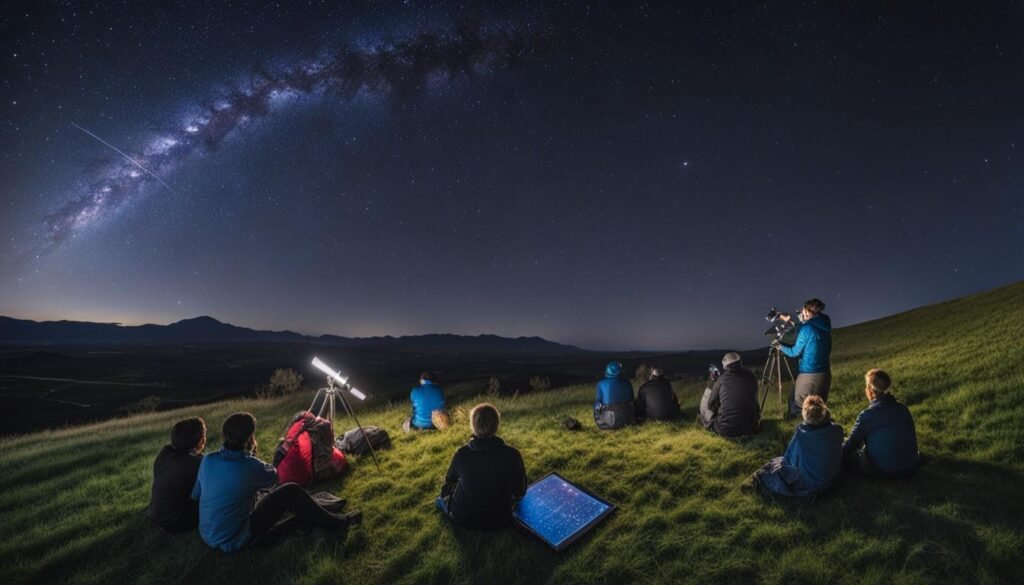
The Historical Controversy Behind the Catalogs
The birth of the Caldwell catalogue was not without its historical controversy. While the Messier catalogue laid the foundation for amateur astronomers to gaze at the stars, it was criticized for its Eurocentric limitations. In response, Sir Patrick Moore’s Caldwell catalogue emerged as a complementary tool, enhancing the roster of observable cosmic phenomena. By comparing Messier and Caldwell, one uncovers a narrative of historical astronomy controversy that ultimately broadened the lens through which we view the universe’s marvels.
A Practical Guide to Observing Caldwell Objects
As you embark on the remarkable journey of observing Caldwell objects, it’s essential to equip yourself with the proper stargazing equipment to enhance your experience. The Caldwell catalogue is rich with celestial treasures that are just within your reach, provided you have the right tools in your astronomical arsenal. Let’s delve into the essentials for successful observation and the crucial practice of observational logging.
Choosing the Right Equipment for Stargazing Success
The first step to a rewarding Caldwell objects observation is selecting a telescope that meets the challenge of capturing faint stars and galaxies. Reflector telescopes with large apertures are particularly adept at gathering light, which is instrumental when it comes to viewing objects like the enchanting spiral arms of a distant galaxy. Additionally, a sturdy mount and a quality set of eyepieces will afford you the stability and versatility needed for extensive viewing sessions.
Don’t overlook the importance of accessories like a red flashlight to preserve your night vision, or a planisphere to help locate objects in the sky. Modern astrophotography attachments can also add a dimension of discovery as you document your celestial finds.
Best Practices for Logging and Tracking Observations
Successful astronomers know that meticulous recording of their discoveries aids in not only remembering each session but also in understanding the intricacies of celestial movements and timings. To this end, implementing a practical guide for observational logging is as integral as the equipment you employ. Here are best practices to keep in mind:
- Log the date, time, and location of your observation to track seasonal and positional changes of Caldwell objects.
- Record atmospheric conditions, such as temperature, humidity, and clarity of the sky, to notice patterns affecting visibility.
- Note down equipment settings for each sighting which may include magnification, filters used, and any challenges or adjustments made during the observation.
- Describe what you see in detail, including shapes, colors, and any unexpected phenomena, to deepen your personal experience and contribute to the community’s knowledge.
As you cultivate these practices, you are contributing to a larger body of knowledge while enhancing your own capacity to appreciate the subtleties and majesty of the cosmos.
Astronomical Objects within Reach: Highlights from the Hubble’s Caldwell Images
When you gaze upon the night sky, the twinkling lights tell ancient stories of cosmic battles and serene beauty. NASA’s Hubble Space Telescope enhances these tales through an arresting visual odyssey, bringing distant celestial shapes into focus for earthbound eyes. With its collection of Hubble Caldwell images, every photograph is a masterclass in the grand ballet of the universe, each beckoning explorative celestial journeys by stargazers and professionals alike.
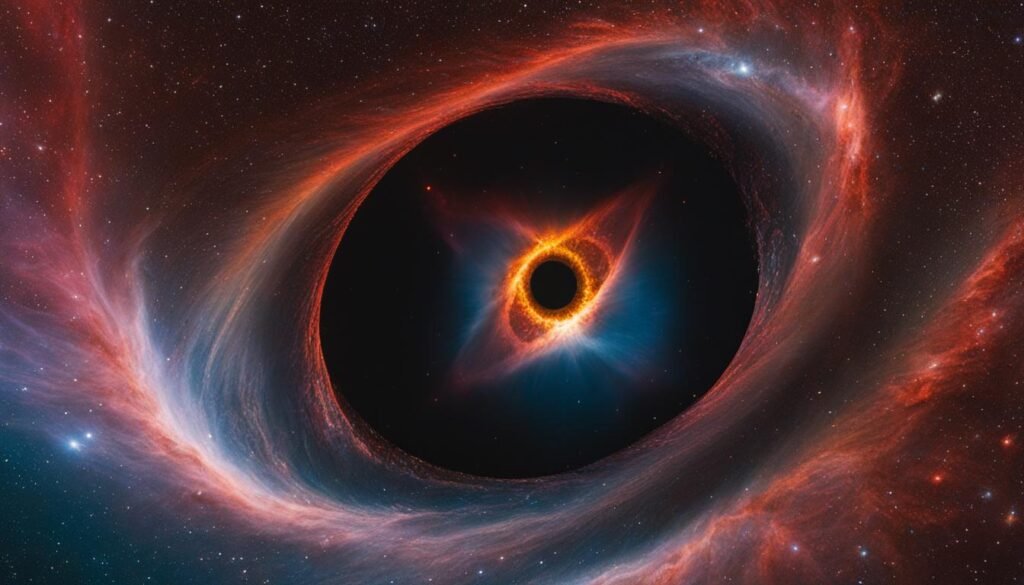
The vibrancy of these astronomical objects is truly breathtaking, with hues and intricacies previously consigned to the imaginings of humanity’s most daring dreamers. Now, the majesty of the universe is displayed in rich detail, thanks to the Hubble’s lens capturing scenes millions of light-years away.
Decoding the Colors and Shapes of Distant Celestial Objects
The palette of the cosmos is endlessly diverse, and Hubble’s images are masterpieces revealing the aesthetic complexity of astronomical objects. Colors in these images aren’t just visual thrills; they tell us about the composition and temperature of celestial bodies. For example, a nebula’s blue glow might indicate the presence of oxygen, while a reddish tint could suggest excited nitrogen or hydrogen. Stellar nurseries and remnants of supernovae are emblazoned across the universe, with Hubble Caldwell images serving as a decoder ring to these distant celestial shapes.
Explorative Journeys into the Unseen Details of Caldwell Objects
The journey doesn’t stop at the visual splendor; your explorative voyage continues as you dive into the seen and unseen details of Caldwell objects. The images present an opportunity to stand witness to celestial events of monumental scale. Witness star formation in real-time, or be dazzled by the remnants of a supernova that once outshined its entire galaxy. There’s a narrative behind each photograph, chronicling the life and death of stars and galaxies, and these Hubble Caldwell images act as captivating waypoints for anyone passionate about understanding the dynamics that govern these astronomical phenomena.
Whether you’re an astrophotographer seeking inspiration from the cosmos, an educator illuminating the minds of eager students, or simply a curious soul drawn to the heavens, the Hubble’s Caldwell images invite you to an explorative celestial journey—a testament to the power of human curiosity and our relentless pursuit of the unknown.
The Ongoing Journey of the Caldwell Observing Programme
As you gaze up at the celestial tapestry, have you ever considered joining a worldwide effort to document the splendor above us? The Caldwell Observing Programme offers you that chance. It stands as a beacon of unity for worldwide enthusiasts, challenging amateur astronomers to aim their telescopes towards the vast expanse and participate in a truly global endeavor. The Caldwell challenge is not merely a personal pursuit but a collective expedition to capture the beauty of the night sky, one Caldwell object at a time.
How Enthusiasts Worldwide are Completing the Caldwell Challenge
The Caldwell challenge has gained traction across continents, with stargazers of all levels of expertise sharing their celestial finds. This series of observational feats has cultivated a supportive environment where enthusiasts can thrive in their quest to document each of the 109 Caldwell wonders.
Collaborating Across Continents: Sharing Data and Insights
What truly propels the Caldwell Observing Programme into prominence is its spirit of intercontinental collaboration. As amateur astronomers from different hemispheres add to the repository of knowledge, your understanding deepens. The shared insights offer a composite view that transcends borders, beckoning you to join in this aerial odyssey. This fusion of efforts doesn’t just map the heavens but also weaves a community tightly knit by the threads of curiosity and ardor for the cosmos.
Caldwell Catalogue Object Spotlights: Noteworthy Examples
As you explore the vastness of space through your telescope, certain noteworthy celestial objects stand out for their mesmerizing beauty and intriguing histories. The Caldwell catalogue spotlights a host of these splendors, inviting stargazers to partake in observing some of the most captivating sights the night sky has to offer. Let us delve into the heart of the cosmos and admire a few handpicked stargazing highlights.
Enthralling both novice and experienced astronomers alike, Caldwell 30, commonly known as NGC 7331, presents itself with such graceful and elegant spirals that one cannot help but be reminded of our very own Milky Way. This galaxy embodies the grand design of cosmic architecture, offering a distant yet tangible connection to the universe’s vastness.
- Cat’s Eye Nebula (Caldwell 6): Known for its remarkably intricate structure, resembling the piercing gaze of a cosmic feline.
- Antennae Galaxies (Caldwells 60 and 61): An entwining pair of galaxies caught in the act of a dramatic celestial collision, reminding us of the ever-changing nature of the cosmos.
Below is a glimpse of one such breathtaking jewel, providing just a hint of the majesty that awaits your discovery in the Caldwell catalogue.

These Caldwell catalogue spotlights are not merely points of light; they serve as windows into the universe, each telling a unique story of formation, evolution, and the overarching dynamism of the stars. Your celestial observations contribute to a grand tapestry woven from the fabric of space and time. As you map the skies, these noteworthy celestial objects await to be the stargazing highlights of your astronomical journey.
Adapting to Technological Advances in Amateur Astronomy
As you gaze up at the night sky, the twinkling stars might seem like distant, unchanging points of light. Yet, in the field of amateur astronomy, nothing could be further from the truth. Technological advances have ushered in a transformative era for stargazers like you, presenting new opportunities to study and enjoy the celestial realm.
The Role of Digital Imaging in Modern Stargazing
The advent of digital imaging has been akin to providing you with a new set of eyes, one that sees the cosmos in ways previously unimaginable. Cameras capable of long-exposure astrophotography can capture the faintest nebulae and galaxies, bringing the wonder of deep-space objects into clear view. Armed with CCD and CMOS sensors, these imaging tools have made it possible for you to meticulously observe and capture images that rival those of professional observatories, right from your backyard.
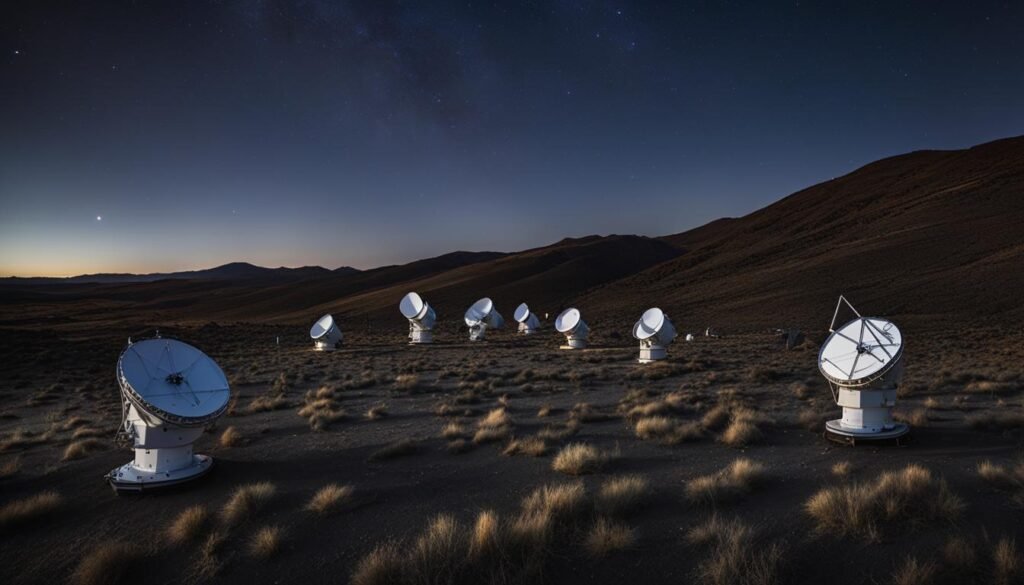
Leveraging Remote Telescopes for Accessing the Inaccessible
Another groundbreaking leap in amateur astronomy is the ability to operate remote telescopes situated in some of the world’s darkest locations. Imagine controlling a telescope situated thousands of miles away, in an area untouched by light pollution, and directing it to view an object from the Caldwell catalogue that is best seen from that hemisphere. Thanks to technological advances like internet connectivity and advanced software, the remote telescope systems make this scenario a reality, bringing a universe of previously inaccessible celestial objects within your reach.
- Enhanced clarity and detail in observations
- Ability to photograph dim celestial phenomena
- Real-time collaborations and data sharing with a global community
- Accessibility to dark skies without geographical constraints
Whether you are cataloging new finds or just enjoying the splendor of a galaxy millions of light-years away, digital imaging and the use of remote telescopes have forever changed the landscape of amateur astronomy. They allow you to explore, document and share your cosmic journeys like never before, making every starry night an opportunity for new discoveries.
The Caldwell Catalogue’s Influence on Popular Astronomy
The advent of the Caldwell catalogue has significantly shaped popular astronomy, sparking a passion for the cosmos among amateur enthusiasts and educators alike. This curated collection of astronomical wonders has proven to be more than just a list of objects; it has become a gateway to the stars for those who cast their gazes upward.
Fueling Passion for the Cosmos Among Amateur Stargazers
There is a visceral thrill that comes from spotting the faint glow of a distant galaxy or the intricate details of a nebula through the lens of a telescope. For many, these experiences are made possible by the guidance of the Caldwell catalogue. Its accessibility and the sheer variety of objects it presents have nurtured an amateur stargazer passion, turning night sky observers into relentless cosmic explorers. Whether it’s the sparkling cluster of the Pleiades or the somber beauty of the Eskimo Nebula, there’s an undeniable allure in chasing these glimpses of the universe with one’s own eyes.
Educational Resources Inspired by the Caldwell List
The catalogue’s reach extends far into educational contexts, where it serves as a cornerstone for developing educational resources that delve into astronomy. Books and guides inspired by the Caldwell list, such as those penned by renowned author Stephen James O’Meara, provide invaluable insights for both beginners and seasoned stargazers seeking to expand their celestial knowledge.
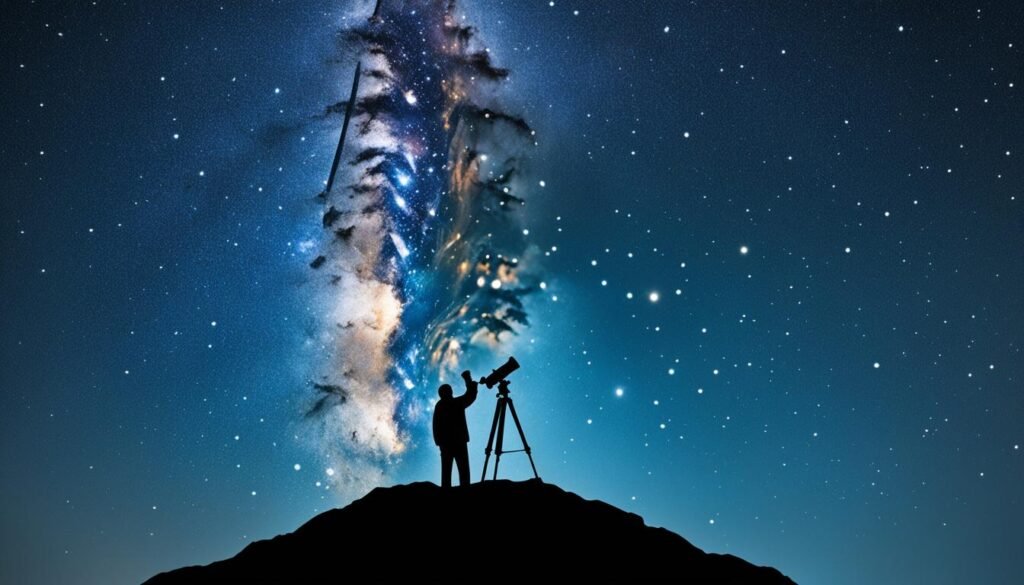
Moreover, astronomy clubs and online forums often reference Caldwell objects, encouraging members to share their observations and techniques. The resulting dialog serves not just as instruction but as inspiration, cultivating a community equally dedicated to the joys of discovery and the pursuit of understanding.
| Caldwell Resource | Author | Focus | Audience |
|---|---|---|---|
| The Caldwell Objects and How to Observe Them | Stephen James O’Meara | Observational Techniques | Beginner to Intermediate |
| Deep-Sky Companions: The Caldwell Objects | Stephen James O’Meara | History and Lore | All Levels |
| Caldwell Observing Challenges | Various Astronomy Clubs | Practical Observing Tips | Amateur Stargazers |
It’s clear that the impact of the Caldwell catalogue is profound, instigating lifelong journeys into astronomy for countless individuals. Your stargazing experiences are enriched by every Caldwell object you seek out, as they tell a story of the universe waiting to be heard. Embrace the catalogue, find your favorite celestial wonders, and join the ranks of those who find solace in the quiet company of the stars.
Preserving Dark Skies for Future Generations of Caldwell Observers
The pursuit of celestial discovery through objects within the Caldwell catalogue is a venture that thrives under pristine night skies. As light pollution increasingly encroaches upon the dark, such endeavors are at risk. Therefore, it is imperative for the astronomical community and stargazers worldwide to champion the cause of preserving dark skies. Your engagement in this movement not only safeguards the beauty of the cosmos for today’s Caldwell observers but ensures that the treasures of the night remain accessible for future enthusiasts.
Advocacy Efforts and Legislation for Minimizing Light Pollution
Your voice is powerful in the fight against light pollution. Through steadfast light pollution advocacy, you can influence change and foster legislation that protects dark skies. Your efforts to promote policies and community ordinances that regulate excessive artificial lighting can preserve the celestial heritage epitomized by the Caldwell catalogue. Advocate for smarter lighting solutions in public and private spaces, heralding a future where the night sky’s splendor is preserved for generations to come.
Community Involvement and Awareness Campaigns
The road to effective change is paved with community involvement. By participating in or initiating awareness campaigns, you directly contribute to a brighter (or rather, darker) future for night sky observations. Educating your neighbors, participating in local astronomy clubs, and coordinating with environmental organizations are ways to spread the word about the importance of preserving dark skies. Your dedication acts as a beacon, illuminating the night with knowledge rather than excess light, thereby protecting the profound experiences promised by the Caldwell celestial wonders.
FAQ
What is the Caldwell catalogue?
The Caldwell catalogue is a compilation of 109 deep-sky objects such as star clusters, galaxies, and nebulae. It was created by Sir Patrick Moore to complement the Messier catalogue, offering celestial wonders from both northern and southern skies for amateur stargazers to enjoy.
Who created the Caldwell catalogue and why?
Sir Patrick Moore, a renowned British amateur astronomer, created the Caldwell catalogue in the 1980s. He developed it to include astronomical objects absent from the Messier catalogue, which primarily features objects visible from the Northern Hemisphere, thereby making the sky’s array of deep-sky objects more accessible to observers around the world.
How many and what types of objects does the Caldwell list include?
The Caldwell list contains 109 objects, comprising of 46 star clusters, 35 galaxies, and 28 nebulae. These objects are diverse and range from bright and easily observable to faint and challenging for even seasoned astronomers, providing a rich tableau for stargazing and scientific inquiry.
How can I use the Caldwell star chart?
The Caldwell star chart is a vital tool that helps you locate the Caldwell objects in the night sky. It is designed for clear visibility and includes various celestial objects positioned for observation from both hemispheres. Having good visibility, being aware of seasonal sky changes, and using a suitable telescope are essential for successful observations.
Can amateur observation of Caldwell objects contribute to astronomy?
Yes, amateur observations of Caldwell objects can significantly contribute to professional astronomy. By observing and recording data on these deep-sky objects, amateur astronomers help improve our understanding of celestial phenomena and the universe at large.
How does the Caldwell catalogue benefit Southern Hemisphere observers?
The Caldwell catalogue specifically covers a selection of objects that are well-placed for observation in the Southern Hemisphere, rectifying the European and Northern Hemisphere bias of the Messier catalogue and providing a more global perspective for amateur astronomers.
What was the controversy surrounding the Messier and Caldwell catalogues?
The controversy involves the historical context in which the Messier catalogue was originally compiled, focusing primarily on objects visible from Europe. The Caldwell catalogue was created partly in response to this limitation, aiming to round out the selection with additional objects viewable from other parts of the world.
What equipment do I need to observe Caldwell objects?
Successful observation of Caldwell objects generally requires a telescope with enough aperture to reveal faint details and light-gathering capability. Additionally, star charts, observing guides, and a logbook for recording observations are also beneficial in your stargazing endeavors.
How has NASA’s Hubble Space Telescope contributed to our understanding of Caldwell objects?
NASA’s Hubble Space Telescope has provided exquisitely detailed images of several Caldwell objects, revealing intricate structures and colors of these distant celestial bodies. These high-resolution observations have enhanced our knowledge regarding the dynamics and composition of galaxies, nebulae, and star clusters.
What is the Caldwell Observing Programme?
The Caldwell Observing Programme is an initiative that encourages amateur astronomers worldwide to observe and document all the objects in the Caldwell catalogue. It fosters a collaborative approach to astronomy, where participants share data and insights, enhancing the community’s collective understanding of the night sky.
Are there any recommended resources for learning more about the Caldwell catalogue?
Yes, there are several resources, such as “The Caldwell Objects and How to Observe Them” and “The Caldwell Objects” by Stephen James O’Meara. These books provide detailed information, observational tips, and serve as great tools for anyone interested in exploring the Caldwell catalogue.
Why is preserving dark skies important for observing Caldwell objects?
Preserving dark skies is critical because light pollution significantly impedes the visibility of celestial objects. Initiatives aimed at minimizing light pollution ensure that future generations can continue to observe and appreciate the Caldwell catalogue’s wonders and the night sky in general.




